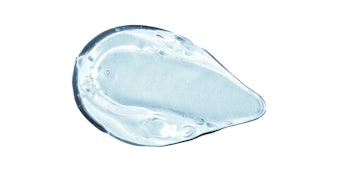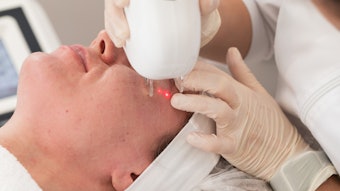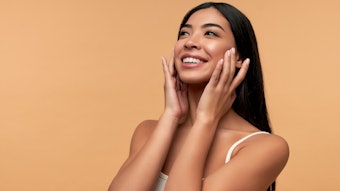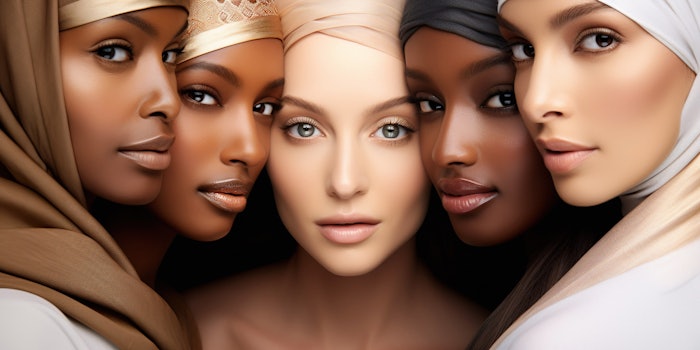
This year's Merz Aesthetics Expert Summit, which took place November 17th-19th, 2023, in Barcelona, Spain saw medical aesthetics  Merz Aesthetics Expert Summit 2023Photo courtesty of Merz Aesthetics
Merz Aesthetics Expert Summit 2023Photo courtesty of Merz Aesthetics
Related: The 4 Major Industry Trends That Will Shape the Future of Medical Aesthetics
1. Regenerative Aesthetics: The Next Generation
Regeneration of tissue lost through trauma, aging and other factors, can only be achieved if the whole tissue, not just one component, is repaired. This means the difference between causing fibrosis and actual regeneration of the system as a whole. To achieve genuine regeneration, certain parameters must be met. Kate Goldie, M.D., explains, "If we want to measure to see if something is truly regenerating, it is important to maintain the scientific understanding of what constitutes regeneration. In Credit: ckybe - stock.adobe.com
Credit: ckybe - stock.adobe.com
The tricky part is figuring out the right formula to rebuild the perfect ecosystem and successfully trick our body’s natural defenses into accepting the new material as native, familiar material and not a foreign threat to be rejected. Biostimulators injected into the skin form biostimulatory scaffolds, a 3D matrix that mimics the biophysical cues of the extracellular matrix. These scaffolds essentially trick stem cells into clipping onto them the way they would the extracellular matrix. Once this is successfully achieved, the next test is tricking the immune system into accepting the new material. If the immune system recognizes the biostimulatory scaffolds as “friend,” the regeneration of tissue structure and function will begin as the cells are activated or “woken up” and directed to regenerate through biophysical cues the biostimulatory scaffolds send to the cell.
Related: Exosomes Offer Innovation Potential in Regenerative Aesthetics
 Credit: AIGen - stock.adobe.com
Credit: AIGen - stock.adobe.com
2. Navigating Social Media
It’s not surprising with all of the viral beauty trends and misinformation about DIY and professional aesthetic treatments and skin care that learning how to navigate social media is a hot topic at the moment. Jennifer Levine, M.D., discussed the significant impact of social media on aesthetic standards, with it serving as one of the primary influences on changing aesthetic standards. One example of this is the change in the preferred ratio for lips, which has a major impact on patients’ interest in injectable filler treatments to enhance lips. While the preferred lip ratio was previously 1:1.6, social media has had a direct impact on the changing the overall preferred lip ratio to 1:1. Credit: Kaspars Grinvalds - stock.adobe.com
Credit: Kaspars Grinvalds - stock.adobe.com
This consistent exposure to specific aesthetic standards on social media results in a perception drift in patients, skewing their understanding of what is actually normal when it comes to individual beauty as opposed to the images they see on social media. It is important to note that these posts causing a perception drift are not from physicians but rather celebrities and social media influencers without any formal education in medical aesthetics.
Related: 6 Ways Social Media Trends Impact Patient Education [Survey Results]
One of the biggest culprits behind this perception drift is the monumental surge in the use of photo filters, which affect certain aesthetic standards such as the change in preferred lip ratio to 1:1, a result of automatic enhancements made by photo filters. Physicians now have the vital responsibility to address the impact of social media aesthetic standards with patients, educating them on what is aesthetically normal for their individual characteristics and manage patient expectations for achieving individual aesthetic goals. Another significant way industry professionals can help change the aesthetic standards being promoted is by changing who dictates these beauty standards. While medical aesthetics patients are comprised of 91% women, the providers are still primarily male. Having and promoting the positive aesthetic achievements of more female practitioners can help dictate more women-centric beauty standards.
During an interview with Daria Voropai, M.D., she made the insightful observation that while we women may make certain aesthetic choices to attract the opposite sex, we go the extra mile when it comes to beauty for each other. A great deal of the things we do to look and feel more attractice are really designed to impress each other. We certainly don't get manicures or, what's more, pedicures to get the attention of men. I have not met too many heterosexual men that notice or really understand when we get our toes painted in bright colors. We do that for other women to see and appreciate. Especially when considered in this light, it only makes sense that we should be dictating our own women-centric beauty standards.
3. Focusing On Patient Safety
Patient safety has been a rising subject in medical aesthetics lately due to a number of recent events, such as the FDA updates on dermal filler recommendations, the incidents and implementation of new IV therapy safety measures, as well as the issue of fatalities and complications with BBL procedures, that highlight the need to reevaluate the regulations and 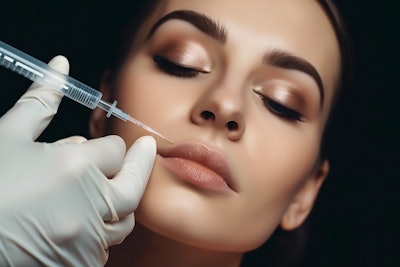 Credit: ksu_ok - stock.adobe.com
Credit: ksu_ok - stock.adobe.com
Tatjana Pavicic, M.D., highlighted the safety considerations related to HA fillers in her session, “Safety In Focus: What You Need to Know and Why It Matters.” Ensuring the safe use of injectable HA fillers by certified professionals is one of those issues getting a great deal of attention in the industry at the moment, frequently in relation to patient safety and proper medical supervision in medspas. However, this is a treatment that all aesthetic practitioners need to make sure they are handling with care, as mistakes can have serious consequences and even cause tissue necrosis if the product is accidentally injected into a vesicle. On top of that, the face is an area that is difficult to hide if something does go wrong, meaning practitioners that want happy patients need to take the utmost care to treat the face safely and with an artistic eye.
Related: New Med Spa Federal Business Requirements + Updated State Guidelines on IV Therapy
Communication is a key aspect of this, as physicians are tasked with listening to what a patient may tell them they want in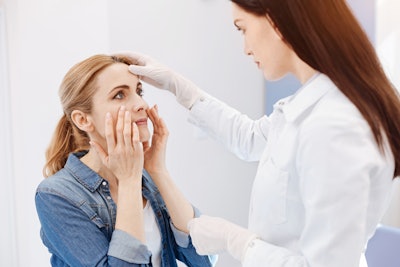 Credit: zinkevych - stock.adobe.com
Credit: zinkevych - stock.adobe.com
Looking out for the patient’s best interest when it comes to aesthetic treatments is another key point. Sometimes telling a patient “no” if they are requesting aesthetic changes based on passing social media beauty fads is ultimately better for them and you than giving in to their demands. Fads change and your priority as their doctor is to consider what is best for enhancing and maintaining their individual beauty, which lasts their lifetime. Prioritizing patient safety in conjunction with an artistic eye for maintaining aesthetic balance using individually tailored treatments designed to preserve the individual beauty of the patient is what will ultimately lead to optimal results and loyal, happy patients.
4. Celebrating Ethnic & Cultural Diversity in Aesthetics
Appreciating and understanding ethnic and cultural diversity in aesthetics and the need to take those differences into account 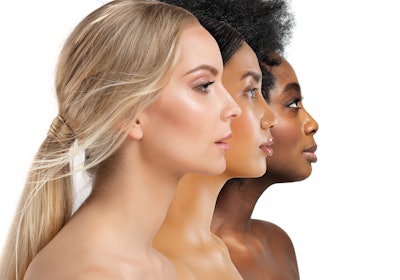 Credit: inarik - stock.adobe.com
Credit: inarik - stock.adobe.com
Dermatologist Sahar Ghannam, M.D., Ph.D., in her session on celebrating ethnic variations, gave the example of differences in facial aging in Middle Eastern ethnicities. Caucasian phenotypes with thinner skin have a tendency to develop wrinkles and fine lines. In comparison, the heavier face and thicker skin typical of middle eastern ethnicities, comprised of a more compact dermis, does not develop as many wrinkles. Instead, sagging occurs in the face and eyelids tend to grow heavier and begin to droop. These differences in facial aging require different approaches to facial rejuvenation treatments that cater to the specific ethnic aging characteristics being treated, addressing facial sagging in this case as opposed to fine lines and wrinkles. Aesthetic professionals are best served by their artistic eye when considering these differences, using an artistic approach to beautify and enhance the individual patient’s beauty through a comprehensive understanding of facial anatomy and how to restore the structure of that particular human canvas.
Related: 6 Recent Insights Into Treatment Innovations for Skin of Color [Survey Results]
Beauty Trends Across Regions:
Middle East: Another aspect of embracing ethnic and cultural diversity in aesthetics is recognizing the different beauty trends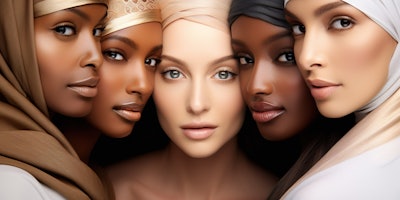 Get ready for the latest global aesthetic trends and innovations set to shape the future of the medical aesthetics industry! You don't want to miss these industry insights from the 2023 Merz Aesthetics Expert Summit!Credit: iconogenic - stock.adobe.com
Get ready for the latest global aesthetic trends and innovations set to shape the future of the medical aesthetics industry! You don't want to miss these industry insights from the 2023 Merz Aesthetics Expert Summit!Credit: iconogenic - stock.adobe.com
Asia: Aesthetic trends across Asia are shifting from more exaggerated aesthetic changes to celebrating natural, individual beauty and preserving ethnic variations. The perception of beauty is shifting from a preference for more westernized aesthetic looks made popular by celebrities such as the Kardashians to an aesthetic look that preserves and respects ethnicity while enhancing individual beauty. One aspect of this shift is the rising popularity of K-dramas, which highlight and celebrate the ethnic variations of Asian individuals, putting a spotlight on non-Western aesthetics in the media.
Brazil: Brazil is on a similar path, with aesthetic trends emphasizing the celebration of ethnic differences and enhancing an individual’s natural beauty. One of the prominent aesthetic trends is having sun-kissed skin with an emphasis on improved sun protection to ward off the aging effects of photodamage. Natural beauty that requires minimal makeup is another rising beauty trend, focusing on enhancing skin quality using treatments to improve firmness, evenness, skin tone and radiance for a naturally beautiful appearance. The controversial BBL procedure is going through a makeover in Brazil to improve safety and overall results. Physicians are exploring how to perform BBLs with minimally invasive procedures such as biostimulatory and HA fillers to improve skin quality, reshape and reduce cellulite in the buttocks.
5. Transgender Care & Aesthetics:
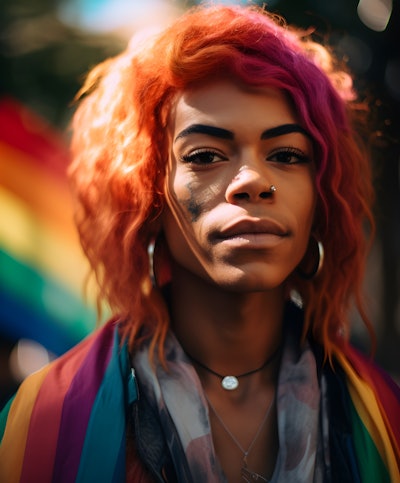 Credit: Marx Creat - stock.adobe.com
Credit: Marx Creat - stock.adobe.com
Related: Minimally Invasive Treatments Can Further Gender-Affirming Aesthetics
Transgender individuals live in a constant state of vulnerability, at high risk of encountering violence and harassment, with lack of access to fundamental human rights that many of us not in their situation take for granted. Aesthetic practitioners have the unique ability to change transgender patients’ lives, helping them to look, feel and live better. Practitioners can help free transgender individuals from being trapped in bodies that don’t express their internal identities.
These procedures are not new for aesthetic professionals, as aesthetic treatments in general are gender-affirming, even if they are performed on cisgender patients. Minimally invasive Credit: Мария Кривецкая - stock.adobe.com
Credit: Мария Кривецкая - stock.adobe.com
